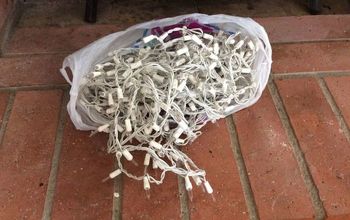organic way to kill poison ivy, english ivy and creeping jenny

Related Discussions
How to kill poison ivy but not kill English Ivy?
I have English ivy around the base of my tree. Recently found poison ivy growing in with the English Ivy. I want to get rid of poison ivy but not kill out the Englis... See more
Would you rather wash and fold laundry or clean the dishes?
Given the choice, would you prefer washing the dishes or doing laundry? Share your preferences and insights!
Need help picking a paint color to match my tile
The tile is gray/white with a hint of beige and looks like wood.The kitchen counters are Baltic beige and cabinets are dark wood as well
How is it really spelled?
Hi, I may be way off base, and if so, I apologize in advance, but I have heard many references to "Fir", the type of wood, with regards to kitchen walls and soffits, ... See more
Why does my oven smell when turned on?
Hi all,Lately, my oven emits an unpleasant smell whenever I turn it on. The kitchen then smells and the foul odor lingers, it's very frustrating.I'm sure I'm not alon... See more
How do I fix a broken metal hanging rod in my closet
I have a broken shelf hanging rod in my closet I tried gluing And taping it and nothing worked I need help and also the shelf is slightly bent
How to find out the value of antique furniture
My husband and I are looking to sell his grandmother's dining room set but, we have no idea what to ask for it. We could not find any markings as to who made it, all ... See more






3 cups white vinegar
1/2 cup table salt
1 tablespoon liquid detergent or soap (I use Dawn) for stick-to-itiveness.
Directions
Hi Cyndi, hope this helps. Poison Ivy Dissolve one cup salt in a gallon of water and add a tablespoon of dish soap to create a solution that can be sprayed on poison ivy. While this method of killing poison ivy is effective in the short run, it will probably require future treatments to keep the ivy at bay. Be careful not to get the solution on plants you love, it kills everything.
English Ivy Clear a 1-to-2-foot-tall section around the trunk at chest height. Then, use clippers, loppers, or a small saw to cut through the vines. Below the cleared area, spray the vines and leaves with Roundup® Poison Ivy Plus Tough Brush Killer products.
creeping jenny The plants are fairly shallow rooted, so I recommend taking a flat, sharp spade and manually cutting out plants from underneath. (They don't respond well to weed killers.). Then cover the areas of removal with thick organic mulch to discourage small undetected stem pieces from re-rooting and seeds from sprouting.